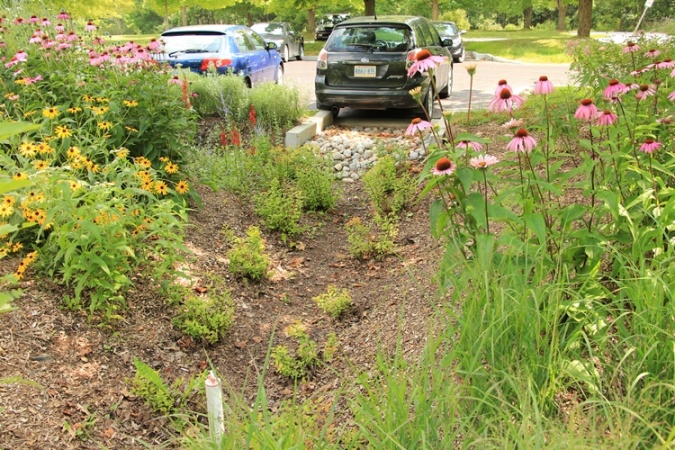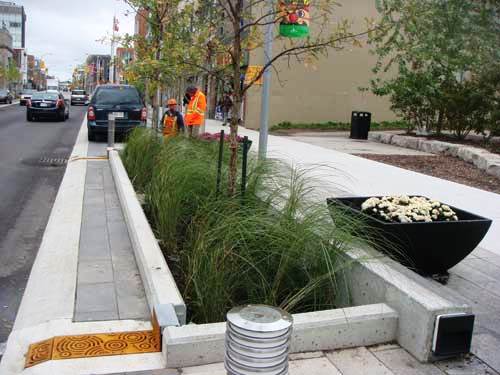Bioretention: Variations
Revision as of 15:53, 28 June 2017 by Jenny Hill (talk | contribs) (Created page with "<table class = "table-responsive"> <table class="table table-striped"> <caption><strong>Types of bioretention cell</strong></caption> <tr class ='success'><th>Form</th><th>Cha...")
| Form | Characteristics | Examples |
|---|---|---|
| Infiltrating cells | Used in developments with large landscaping areas, parks, parking lot islands, or any areas without tight space constraints. They have side slopes ≥2:1. Often, they receive sheet flow, but in some cases they are surrounded by curbs and will have inlets. The distinction between these options will determine the recommended types of pre-treatment. |
|
| Rain gardens | Often found on residential sites or on land managed by community organisations . This simple variation may be constructed by the property owner and usually excludes the storage layer. | See main article on rain gardens |
| Bioretention planters (stormwater planters) | Typically used in ultra-urban areas adjacent to buildings and in plazas. They appear similar to traditional landscaped beds, but differ by receiving runoff from nearby surfaces. | Image here |
| Extended tree pits (parallel bioretention) | Located within the right-of-way, occupying the space between sidewalk and street. The inlets can be positioned on either or both sides, and are designed to prevent the system from filling beyond a fixed capacity. When ponding occurs, stormwater bypasses the inlets, making this a 'parallel' system rather than a flow-though or online design. | |
| Curb extensions (bump outs) | Installed in road-right-of-way, these function as a stormwater facility and a traffic calming measure. Inlets are integrated into the raised concrete curb and receive flow from the street side. | Image here |

